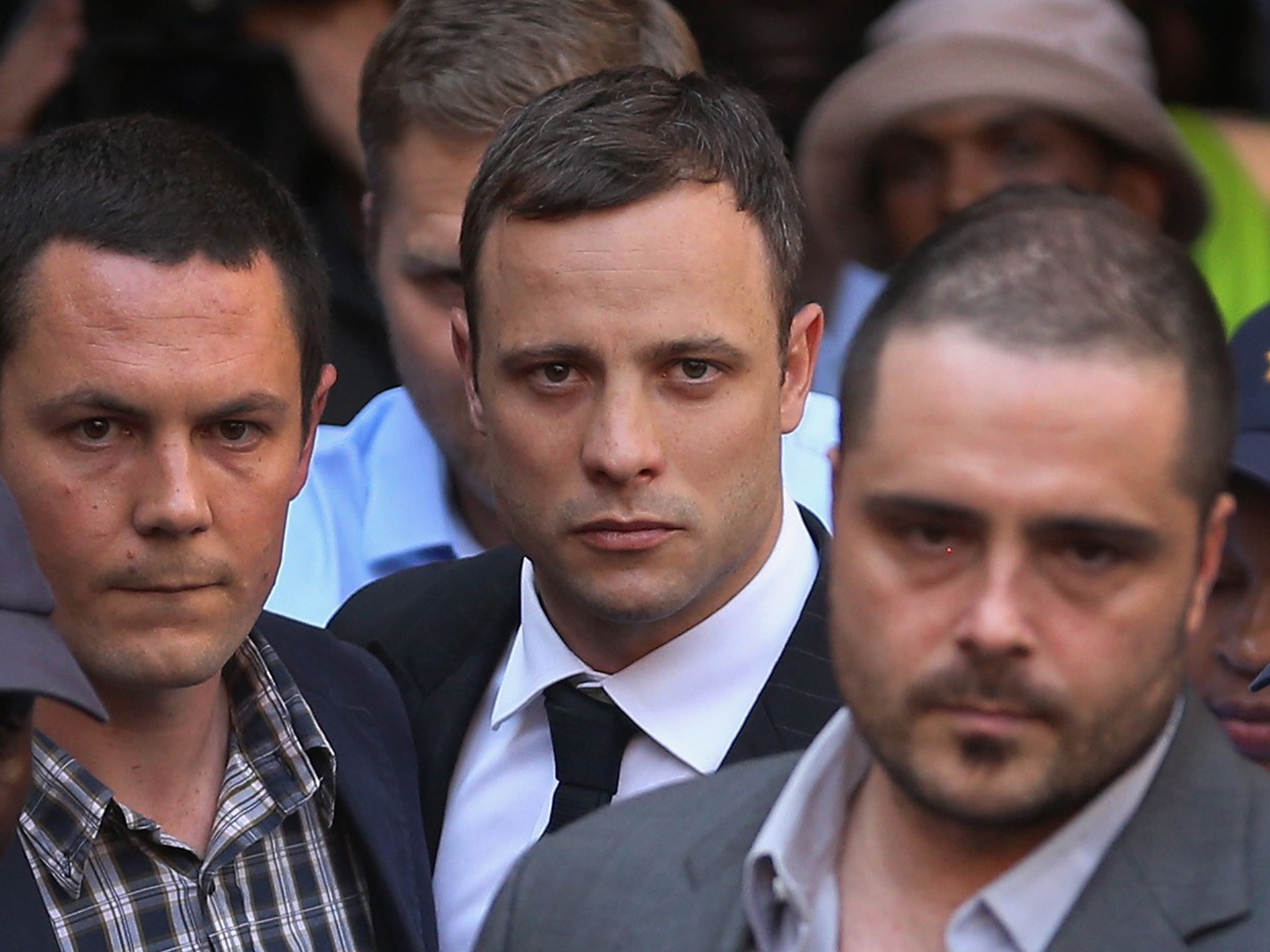Pistorius: Reeva Steenkamp was just a chapter in a scary story
Pistorius is already on his way to rehabilitation in a country where three women a day are killed by a husband or boyfriend

Your support helps us to tell the story
From reproductive rights to climate change to Big Tech, The Independent is on the ground when the story is developing. Whether it's investigating the financials of Elon Musk's pro-Trump PAC or producing our latest documentary, 'The A Word', which shines a light on the American women fighting for reproductive rights, we know how important it is to parse out the facts from the messaging.
At such a critical moment in US history, we need reporters on the ground. Your donation allows us to keep sending journalists to speak to both sides of the story.
The Independent is trusted by Americans across the entire political spectrum. And unlike many other quality news outlets, we choose not to lock Americans out of our reporting and analysis with paywalls. We believe quality journalism should be available to everyone, paid for by those who can afford it.
Your support makes all the difference.The process of rehabilitation has already begun. The Paralympic athlete Oscar Pistorius has been cleared of murdering his girlfriend, Reeva Steenkamp, who died behind the locked door of a toilet at his home in South Africa last year. He was convicted of culpable homicide and a separate firearms charge, but he is out on bail amid speculation that he could even get a suspended sentence when he appears in court next month.
These events are shocking but not surprising. From the outset, Pistorius was given an easy ride by much of the world’s media, who uncritically repeated his controversial defence that he accidentally shot Steenkamp after mistaking her for a burglar. This is what happens when events involving famous people are viewed in isolation, as riveting individual dramas rather than belonging to a wider narrative. Why would an internationally famous runner kill his girlfriend? He says it was a mistake, but the question needs to be seen in context: why did no fewer than 1,024 South African men kill their current or former partners in 2009?
This is not a country, in other words, where such events are rare. A woman is killed by a husband or boyfriend every eight hours, according to a study published two years ago by the South African Medical Research Council. This translates to three women a day, and the study actually showed an improvement on the situation in South Africa 10 years earlier, when four women were dying every day. It has “the highest reported rate globally of females murdered by shooting in a country not engaged in war”, according to an article published in the South African Medical Journal (SAMJ) in 2010.
Unsurprisingly, South Africa is on the list of countries where femicide – defined by the World Health Organisation as the intentional murder of women [simply] because they are women – is practised. Most victims are mixed race or black and their deaths receive little publicity, despite the dreadful injuries inflicted upon them. In that sense, Reeva Steenkamp – white, beautiful and well-known as a model in South Africa – was a far-from-typical victim (though, of course, Pistorius was cleared of murder). Hierarchies of victims are uncomfortable to contemplate but it might at least have been hoped that her death, at the hands of one of the country’s most admired men, would finally shame South Africa into acknowledging the scale of its problem with guns and violence. Instead, Steenkamp has been sidelined in the reporting of her own death, overshadowed by a man who is obsessed with lethal weapons, but who appears to consider himself the principal victim of this sequence of events.
For all the unusual features of the case, Steenkamp’s killing appears to fit a pattern of crime repeated over and over in South Africa. Women’s organisations, doctors and a handful of politicians know that much more needs to be done to tackle a macho culture aggravated by the role of guns as status symbols. Gun ownership “is a means to demonstrate manhood”, according to the SAMJ. The article goes on to remark that women “are most vulnerable behind closed doors, where guns are used to intimidate, control, hurt and kill intimate partners”.
Judge Thokozile Masipa, who presided over the murder trial, decided to ignore messages in which Steenkamp talked about the athlete’s volatile moods and said she was sometimes afraid of him. But Pistorius’s former girlfriend Samantha Taylor says she was so frightened of him that she hid one of his guns, which he later used to kill Steenkamp. Ms Taylor’s claims go some way towards establishing a history of domestic abuse, including her account of the athlete’s “angry and possessive rages” – an accusation that will ring true to anyone who witnessed his furious reaction when he lost a race at the 2012 Paralympics. And while the judge dismissed two firearms charges last week, she found Pistorius guilty of firing a gun in a crowded restaurant, just weeks before he killed Steenkamp.
Within hours of the fatal shooting, the model was becoming a footnote in her killer’s tear-sodden melodrama. He sobbed and retched his way through his trial, bursting into tears again on Thursday when Judge Masipa cleared him of murder. It is not uncommon for victims of crime to break down when asked to recall traumatic events, such as being beaten or raped, but it is rare for an alleged perpetrator to indulge in such boundless displays of self-pity. Pistorius’s tears lent weight to the prosecution case that he was volatile – almost entirely devoid of self-control.

Pistorius shot Steenkamp through a door, using a 9mm pistol and hollow-point ammunition which mushrooms inside body tissue. Her injuries were so devastating that a forensics expert suggested that one shot to her arm would have acted “like an instant amputation”. In the most puzzling and controversial section of her judgment, Judge Masipa said the athlete’s intention was to shoot, not to kill, and the prosecution had failed to establish that he “accepted the possibility of killing someone”. It is hard to believe that Pistorius, who had had weapons training, did not understand the damage that this ammunition would cause, regardless of who was cowering behind the locked door. “How can you shoot four bullets through a door and not foresee their death?’ a South African legal expert, Professor Stephen Tuson, asked.
Even so, shooting a terrified woman four times with expanding bullets is no obstacle to a successful sporting career. Within hours of the verdicts, the International Paralympic Committee announced that Pistorius “had done a great deal” for the movement and would be allowed to compete again. But he has already won the most significant contest of his life in a country where men, guns and violence are regarded as natural companions.
Join our commenting forum
Join thought-provoking conversations, follow other Independent readers and see their replies
Comments